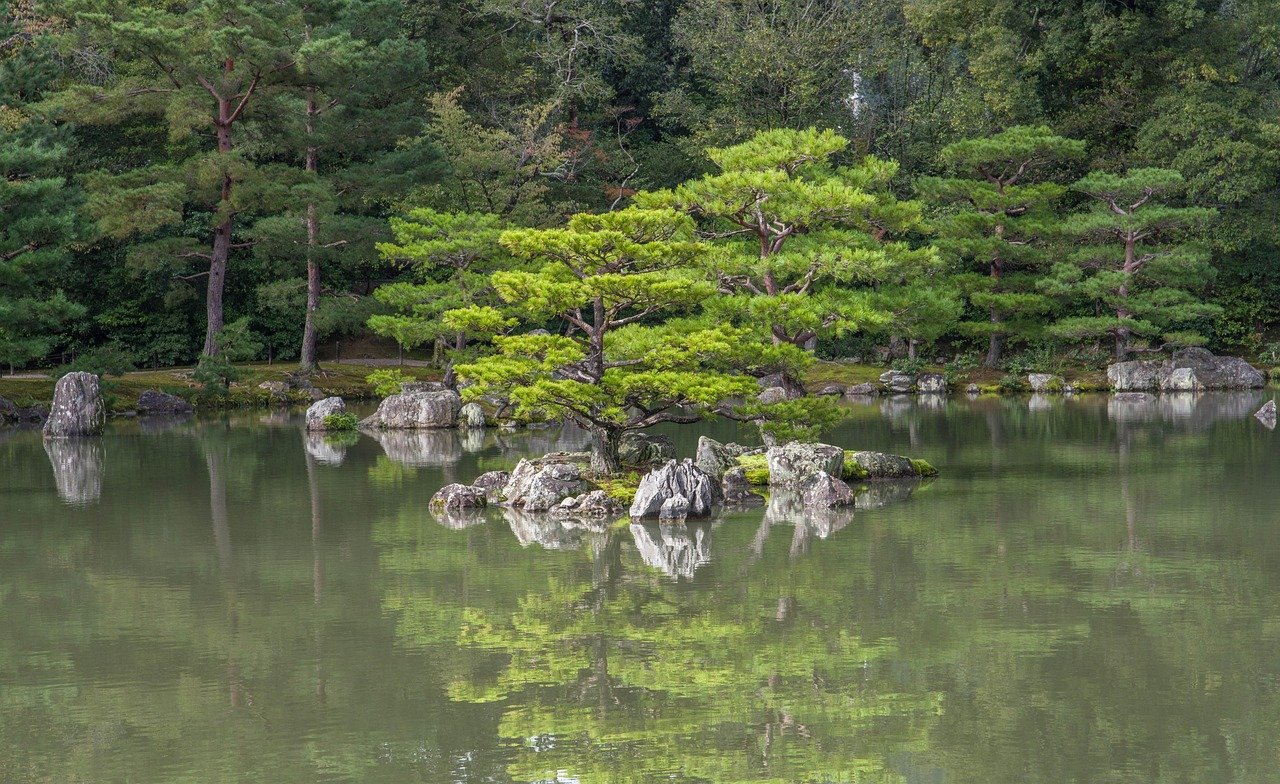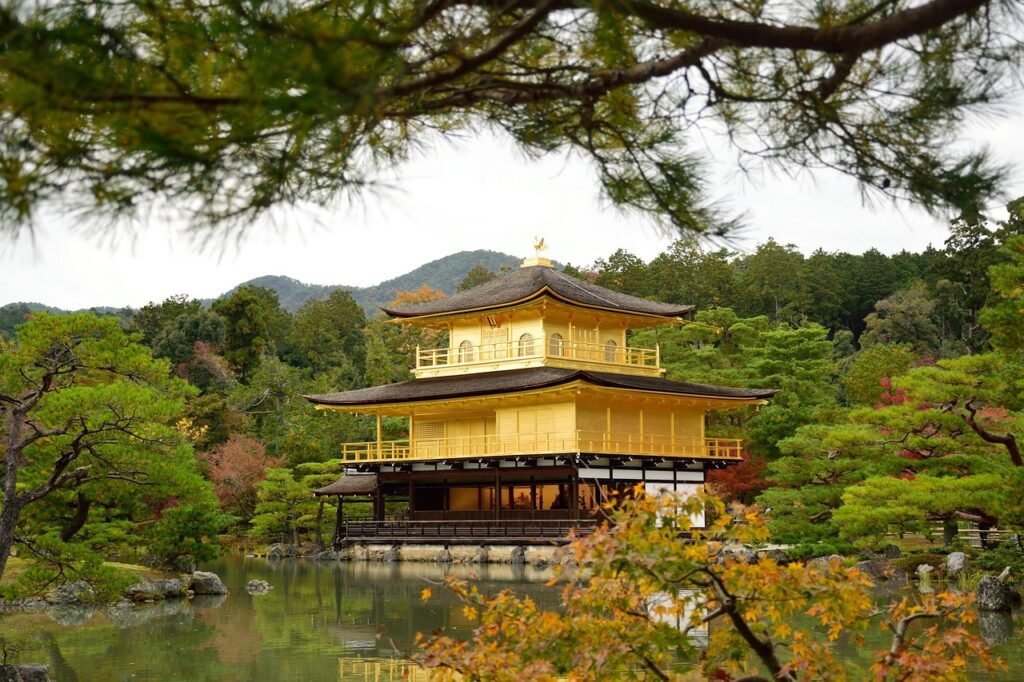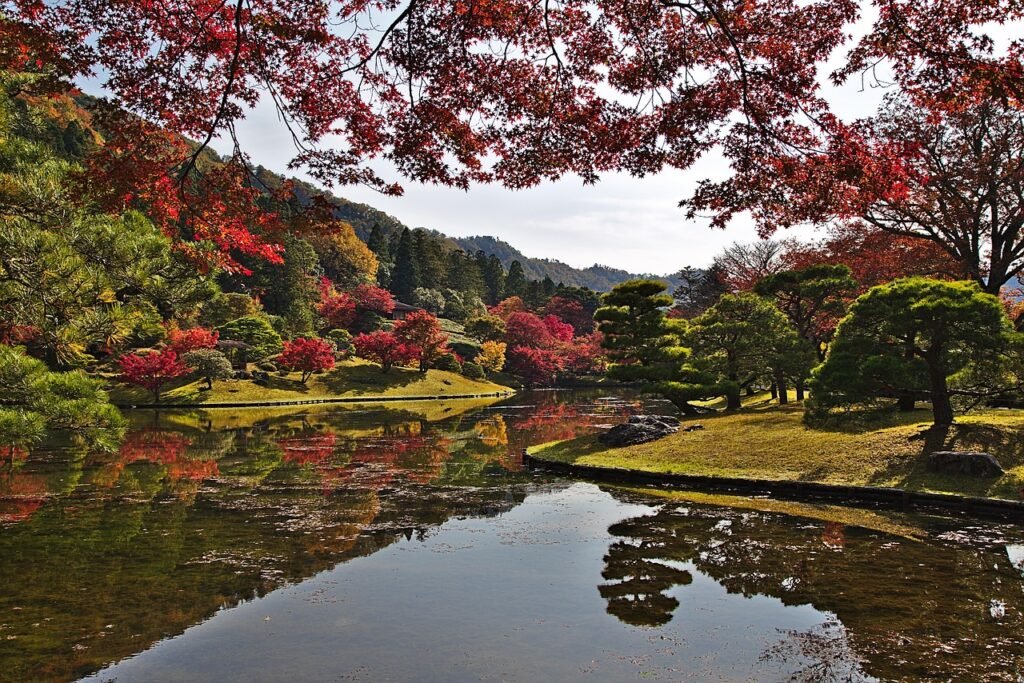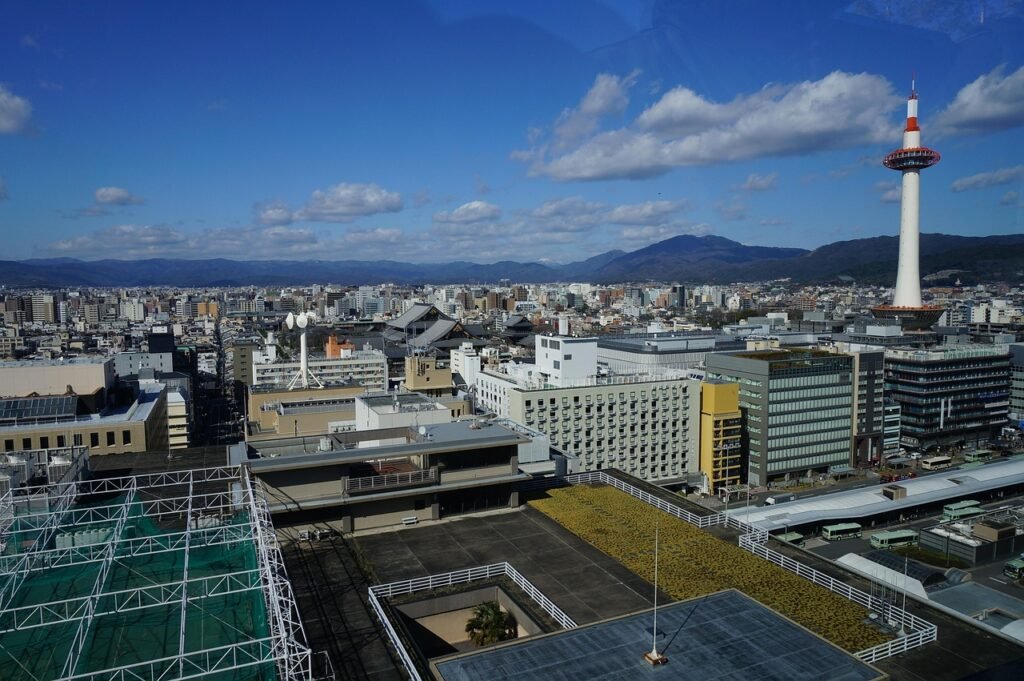
Here’s a six‑themed guide to senior‑friendly locations and experiences in Kyoto (including nearby Uji, Yamashina).
Each theme features recommendations, with reasons why each suits seniors and what makes them special.
All details are drawn from current official and credible sources.
Kyoto, with its rich history, serene gardens, and vibrant cultural scene, offers a plethora of senior-friendly activities.
The city has made significant strides in accessibility, with many public buses and subway stations being wheelchair accessible, and numerous popular attractions offering ramps or alternative routes for those with mobility challenges.
🧭 Exploration & Discovery
For curiosity‑driven seniors who enjoy gentle paced discovery and guided insights:
Kyoto National Museum & Its AR Garden Trail
Explore art and architecture from Western Japan; free admission to gardens for those over 70, plus AR app brings outdoor exhibits alive—ideal for mixed indoor/outdoor explorations with low walking strain.
Fushimi Inari Taisha – Lower Pathway Loop
The famous shrine’s first few hundred torii gates form a flat, easy loop with benches and rest stops. A reasonable walk with rich discovery and gentle elevation.
-
- Description: A Shinto shrine famous for its thousands of vibrant orange torii gates that snake up a mountain.
- Why it’s senior-friendly: While the full hike up the mountain might be strenuous, seniors can comfortably explore the main shrine area at the base and walk through the initial, most iconic sections of the torii gates. This provides a taste of the unique atmosphere without requiring extensive uphill walking.
- Unique Elements: The visually stunning tunnel of torii gates, the fox statues (messengers of Inari), and the spiritual ambiance. Many small shops and eateries are also present at the base.
Sanjūsangen‑dō Temple Guided Visit
Long sweeping hall with 1,001 statues, accessible via short bus and light walk; indoor comfort and guided narration help seniors engage deeply.
Arashiyama Bamboo Grove (with river‑side stroll)
A wide level board‑walk through towering bamboo, plus accessible riverside viewpoints and nearby cafes for rest. Very sensory, calming, yet enriching.
- Description: A mesmerizing natural grove of towering bamboo stalks, offering a tranquil and visually stunning walk.
- Why it’s senior-friendly: While the main path can be crowded, the walk itself is relatively flat. Many seniors find the serene beauty and unique atmosphere incredibly rewarding. It’s best visited during off-peak hours (early morning or late afternoon) for a more peaceful experience.
- Unique Elements: The unique sensation of walking through the towering bamboo, the calming sound of the bamboo swaying in the wind, and opportunities for beautiful photography. Note on accessibility: While the main path is generally accessible, some connecting areas or paths to specific temples within Arashiyama may have gravel or steps.
Guided Nishiki Market Food & Culture Walking Tour
Specialized senior‑friendly tour slowly covers Kyoto’s “Kitchen,” shaded arcade, short stops at stalls, portable seating available, tasting regional specialties.
- Description: Known as “Kyoto’s Kitchen,” this vibrant covered market street offers a fascinating glimpse into local food culture, with numerous stalls selling fresh produce, seafood, traditional snacks, and culinary tools.
- Why it’s senior-friendly: It’s a covered arcade, making it suitable for all weather conditions. The flat, paved pathway is easy to navigate, and seniors can set their own pace, stopping to sample local delights.
- Unique Elements: The sheer variety of unique Japanese ingredients and prepared foods, opportunities to interact with local vendors, and a lively, authentic atmosphere. It’s a sensory experience of sights, sounds, and smells.
Kyoto Railway Museum:
- Description: A large, modern museum dedicated to the history of Japanese railways. It features numerous real train cars, including steam locomotives and Shinkansen bullet trains.
- Why it’s senior-friendly: The museum is spacious, fully wheelchair accessible with ramps and elevators, and offers a comfortable indoor environment. Seniors can enjoy the nostalgia of historic trains and observe the impressive engineering.
- Unique Elements: Interactive exhibits like a driving simulator (though this might require some dexterity), a miniature railway, and the opportunity to walk under and around real train cars. The outdoor SL Steam locomotive ride offers a gentle, scenic experience.
Kyoto Aquarium:
- Description: Located near Kyoto Station, this modern aquarium showcases marine life from local rivers to the Pacific Ocean.
- Why it’s senior-friendly: It’s entirely indoors, climate-controlled, and fully wheelchair accessible. The clear signage and well-laid-out exhibits make for easy navigation. The relaxing atmosphere of observing aquatic life is very calming.
- Unique Elements: Engaging dolphin shows with wheelchair spaces for viewing, large tanks that provide an immersive experience, and opportunities to learn about conservation efforts.

🏛️ Culture & Historic
For heritage lovers eager to connect with Kyoto’s rich traditions:
Gion dance and geisha performance at a calm teahouse
Presented in small intimate venues in Gion or Miyagawa‑chō; seniors watch classical dance in seated comfort with respectful pacing.
- Description: A traditional theater that offers condensed performances of various Japanese traditional arts, including kyogen (traditional comedy), kyomai (Kyoto-style dance), gagaku (ancient court music), kado (flower arrangement), sado (tea ceremony), and bunraku (puppet theater).
- Why it’s senior-friendly: The performances are relatively short and provide a comprehensive overview of different traditional arts in a comfortable, seated environment. It’s a great way to experience a variety of cultural forms without extensive walking.
- Unique Elements: Seeing real maiko (apprentice geisha) perform, experiencing several traditional arts in one sitting, and gaining a deeper appreciation for Japanese aesthetics.
The Tale of Genji Museum, Uji
Literary museum with life‑size sets, visual projections and short film dramatizing Heian period novels—immersive but seated; seniors can rest and enjoy richly illustrated history.
Kyoto Butoh‑kan Butoh dance performance
Unique traditional modern dance in a small converted kura; performances are short (~40 min), intimate, with seating and tranquil atmosphere.
Salon de thé François (historical café)
A 1930s culture‑heritage café with elegant stained glass, historic ambiance, gentle setting for tea and reflection among cultural memorabilia.
SAMURAI & NINJA Museum Kyoto With Experience
Interactive displays of samurai armor, safe simple sword‑handling demos and ninja throws; guided pacing, benches, wheelchair accessible exhibits.
Sanju-sangendo Temple:
- Description: Home to 1,001 statues of Kannon, the goddess of mercy, this temple features an impressively long wooden hall. The sheer number and artistry of the statues are breathtaking.
- Why it’s senior-friendly: The main hall is a flat, long structure, making it very easy to walk through and observe the statues at a leisurely pace. It’s a quiet and contemplative space, ideal for reflection.
- Unique Elements: The overwhelming sight of 1,000 life-sized Kannon statues flanked by a large main Kannon, all exquisitely carved. The calm and spiritual atmosphere is deeply moving.
Nijo Castle:
- Description: A UNESCO World Heritage site that served as the Kyoto residence of the Tokugawa Shoguns. It’s known for its ornate Ninomaru Palace with “nightingale floors” that chirp when walked upon, a protective measure against intruders.
- Why it’s senior-friendly: The extensive grounds are largely flat, and the palace offers accessible ramps. While visitors are asked to transfer to the castle’s indoor wheelchairs to protect the historical floors, staff are generally helpful.
- Unique Elements: The “nightingale floors” are a fascinating interactive element (though hearing them depends on your weight and walking style). The opulent interior, intricate artwork, and beautiful gardens offer a deep dive into feudal Japan.
Kiyomizu-dera Temple (with accessible route):
- Description: One of Japan’s most celebrated temples, famous for its large wooden stage that juts out from the main hall, offering panoramic views of Kyoto.
- Why it’s senior-friendly: While the approach road can be steep, there is an accessible route (a car road) for those with mobility issues, which can be accessed by taxi or a pre-arranged vehicle. Once at the temple, ramps and accessible walkways are available, allowing seniors to enjoy the main areas and views.
- Unique Elements: The iconic wooden stage built without nails, the Otowa Waterfall (where visitors can drink for health, longevity, or success), and the stunning views, especially during cherry blossom or autumn foliage seasons.
Kyoto National Museum:
- Description: One of Japan’s oldest and most prominent museums, housing an extensive collection of Japanese and Asian art and archaeological artifacts.
- Why it’s senior-friendly: The museum is modern, spacious, and fully accessible with elevators and wide corridors. It provides a quiet and contemplative environment to appreciate historical and artistic masterpieces.
- Unique Elements: Its significant collection of national treasures and important cultural properties, including ancient ceramics, sculptures, textiles, and calligraphy. Rotating special exhibitions offer fresh perspectives.
🌿 Outdoor Adventures
Gentle nature, gardens and fresh air tailor‑made for older adults:
Arashiyama scenic riverside boat cruise
Flat riverside boarding; relaxing boat ride amid mountains and forest with seating, commentary and scenic respite.
Kyoto Railway Museum (outdoor locomotive garden + simulators)
Large outdoor area with historic rolling stock; seniors enjoy soft seating and simulator experiences about trains (gentle, interactive).
Seasonal strolling at Kyoto Imperial Palace Park
Wide paved paths, shade, benches, quiet horticultural displays; ideal for calm outdoor exploration.
Sagano Scenic Railway (mountain scenic train)
A slow heritage train ride through forested valley – seated throughout, spectacular nature from comfortable observation.
Monkey Park Iwatayama in Arashiyama (path and view)
A moderate path with handrails to viewpoints and macaque observation; benches en route, great views and gentle wildlife watching.
- Description: A UNESCO World Heritage site with a renowned landscape garden that incorporates the Arashiyama mountains as borrowed scenery.
- Why it’s senior-friendly: The central garden around the pond is mostly flat and easy to navigate, offering beautiful views from various points. While the temple buildings themselves might have some steps, the garden is the main highlight and is very accessible.
- Unique Elements: The Sogenchi Teien (pond garden) is a masterpiece of Japanese landscape design, offering serene views that change with the seasons. It’s a perfect spot for peaceful contemplation.
Philosopher’s Path (Tetsugaku no Michi):
- Description: A picturesque stone path that follows a canal lined with hundreds of cherry trees. It’s a pleasant walk connecting Ginkaku-ji (Silver Pavilion) and Nanzen-ji Temple.
- Why it’s senior-friendly: The path is largely flat and well-maintained, making for an easy and scenic stroll. Benches are available along the way for rests. It’s particularly beautiful during spring (cherry blossoms) and autumn (foliage).
- Unique Elements: The tranquil atmosphere, charming cafes and small shops along the path, and the opportunity to appreciate nature’s beauty in a relaxed setting.
Kyoto Botanical Garden:
- Description: Japan’s oldest public botanical garden, featuring a vast collection of plants from around the world, including a large conservatory.
- Why it’s senior-friendly: The gardens are expansive, with flat, paved pathways ideal for leisurely walking or wheelchair use. The conservatory provides a warm, accessible indoor option regardless of weather.
- Unique Elements: Diverse themed gardens (Japanese garden, Western garden, bamboo garden), seasonal flower displays, and the impressive conservatory with tropical plants. It’s a peaceful escape from the city bustle.
Daikakuji Temple Osawa-no-ike Pond:
- Description: A large, ancient pond located within the grounds of Daikakuji Temple, known for its scenic beauty and being Japan’s oldest artificial pond garden.
- Why it’s senior-friendly: The path around the pond is mostly flat and provides a very gentle walk. It’s less crowded than some other major attractions, offering a more peaceful outdoor experience.
- Unique Elements: The historical significance of the pond, the views of the surrounding mountains, and the opportunity for quiet reflection. Rowboats are sometimes available for a unique perspective (though this might depend on individual mobility).
Kyoto Imperial Palace Park (Kyoto Gyoen National Garden):
- Description: A large public park surrounding the former Kyoto Imperial Palace. It’s a vast green space with wide, flat paths, mature trees, and smaller historical residences.
- Why it’s senior-friendly: The park is entirely flat and features well-maintained gravel paths, perfect for leisurely strolls. There are plenty of benches and open spaces for relaxation.
- Unique Elements: The opportunity to experience a large, historical green space in the heart of Kyoto, the chance to see various birds and wildlife, and a sense of imperial grandeur (though the palace itself often requires a tour booking).

🎨 Creativity & Arts
Engaging craft workshops, artisan creativity and modern arts:
Kyoto International Manga Museum
Interactive manga‑creation workshops, large public reading room, exhibits on manga history. Seniors can try drawing, sit and read comfortably.
Villa Kujoyama open‑studio day
Monthly open‑day includes exhibitions by resident French‑Japanese artists, accessible, seated presentations and small group talks in serene hillside setting.
Hands‑on Hanafuda card workshop at Nintendo Museum, Uji
Create original hanafuda playing cards by hand, as part of interactive exhibits; low‑impact, seated, nostalgic creativity session.
Pottery or brush‑painting class in Kyoto crafts workshop
Many senior‑oriented studios offer half‑day seated classes in ceramic or sumi‑e, with support and gentle pacing.
Contemporary art at Kyoto City KYOCERA Museum of Art
Modern exhibitions of Japanese contemporary art, wheelchair accessible, audio guides, benches around spacious galleries.
Kyoto Art Center:
- Description: An active cultural hub housed in a former elementary school, offering exhibitions, performances, and workshops across various art forms.
- Why it’s senior-friendly: It provides opportunities to observe and engage with contemporary and traditional arts in a dynamic setting. Check their schedule for senior-friendly workshops or accessible exhibitions.
- Unique Elements: Its unique setting in a renovated school, diverse program of events, and artist-in-residence programs that offer insights into ongoing creative processes.
Tea Ceremony Experience:
- Description: Participate in a traditional Japanese tea ceremony, learning about its rituals, aesthetics, and the preparation of matcha.
- Why it’s senior-friendly: Many tea ceremony venues offer comfortable seating (chair seating is often available alongside traditional tatami mats), and the pace is inherently slow and meditative. It’s a seated cultural immersion.
- Unique Elements: The meticulous movements and deep symbolism of the ceremony, the serene atmosphere, and the chance to savor freshly prepared matcha with traditional sweets.
Washi Papermaking Workshop:
- Description: Learn the ancient art of making traditional Japanese paper (washi) by hand.
- Why it’s senior-friendly: This is a gentle, seated activity that allows for creative expression without strenuous physical demands. It’s a relaxing and rewarding craft.
- Unique Elements: The tactile experience of working with natural fibers, the opportunity to create a unique souvenir, and learning about a centuries-old craft. Many workshops allow you to add pressed flowers or leaves for personalization.
Calligraphy Class:
- Description: Learn the basics of Japanese calligraphy (Shodo), focusing on brush strokes, characters, and the philosophy behind the art form.
- Why it’s senior-friendly: A seated and mindful activity that promotes focus and fine motor skills. Instructors often provide individual guidance, making it accessible for beginners.
- Unique Elements: The meditative aspect of writing, the beauty of Japanese characters, and the ability to create a piece of art to take home.
Kyoto Shibori Museum (Dyeing Experience):
- Description: Explore the history and techniques of Shibori, a traditional Japanese tie-dyeing art form. The museum often offers hands-on dyeing workshops.
- Why it’s senior-friendly: The dyeing process is generally seated and involves precise but not strenuous movements. It’s a creative outlet that results in a beautiful, unique souvenir.
- Unique Elements: Learning about the intricate Shibori techniques, the joy of creating your own patterned fabric (e.g., a scarf or furoshiki wrapping cloth), and the museum’s collection of historical Shibori pieces.
🍽️ The Foodie Senior
Markets, tastings, gentle culinary delights:
Tea ceremony experience in a traditional teahouse
One‑hour seated matcha ceremony with explanations, slow pace ideal for seniors, cultural immersion with minimal movement.
Afternoon confection‑making workshop (wagashi)
Seniors mold seasonal wagashi sweets using gentle tools in seated instruction—creative food meets gentle craft.
Kyoto Cooking Class (e.g., Bento or Wagashi):
- Description: Participate in a hands-on cooking class to learn how to prepare traditional Kyoto dishes (kyō-ryōri) or exquisite Japanese sweets (wagashi).
- Why it’s senior-friendly: Classes are typically conducted in a relaxed environment with plenty of seating and often involve simple, guided steps. They offer a delicious and interactive way to engage with Japanese culture.
- Unique Elements: Learning authentic recipes, enjoying the meal or sweets you’ve prepared, and gaining a deeper understanding of Japanese ingredients and culinary philosophy. Many classes are small-group, allowing for personalized attention.
Nishiki Market Food Tour:
- Description: A guided walk through Nishiki Market, with stops to sample various local delicacies, learn about the market’s history, and understand Kyoto’s food culture.
- Why it’s senior-friendly: A guided tour ensures easy navigation through the bustling market, with opportunities to taste a wide array of foods without getting lost or overwhelmed. The pace is typically comfortable.
- Unique Elements: Sampling fresh seafood, traditional pickles, sweets, and other unique Kyoto specialties; insights from a local guide about food traditions and hidden gems.
Kaiseki Ryori Dining Experience:
- Description: Indulge in a multi-course traditional Japanese dinner, a culinary art form emphasizing seasonal ingredients, meticulous preparation, and exquisite presentation.
- Why it’s senior-friendly: It’s a seated dining experience that allows for leisurely enjoyment of fine cuisine. Many high-end restaurants offer private rooms or comfortable table seating.
- Unique Elements: The artistic presentation of each dish, the use of seasonal ingredients, and the refined atmosphere of a traditional Japanese meal. It’s a true gastronomic journey.
Sake Brewery Tour & Tasting (Fushimi District):
- Description: Explore the Fushimi sake district, home to numerous traditional sake breweries, with opportunities to learn about the brewing process and sample different types of sake.
- Why it’s senior-friendly: Many breweries offer accessible tours and tasting rooms. The walking distances between breweries are manageable, and it’s a seated tasting experience.
- Unique Elements: Learning about the intricate art of sake brewing, tasting a variety of sake, and experiencing the historic atmosphere of a traditional sake district. Non-alcoholic options may also be available.
Yuba (Tofu Skin) Restaurant Experience:
- Description: Kyoto is famous for its yuba, the delicate skin that forms on top of heated soy milk. Many restaurants specialize in yuba-centric dishes, offering a healthy and unique culinary experience.
- Why it’s senior-friendly: Yuba is light, easily digestible, and often served in a serene setting, making it a comfortable dining option for seniors.
- Unique Elements: Experiencing a uniquely Kyoto ingredient, appreciating its subtle flavors and textures, and dining in restaurants that often boast traditional Japanese aesthetics.

🔬 Science & Education Trail
Museums and exhibits that fascinate through science, history, and interactivity:
Nintendo Museum’s “Learn, Experience, Create” exhibits
Multi‑section interactive galleries with tokens to play, exhibit machines, nostalgia‑based learning of tech history.
Tale of Genji Museum’s film & historical models
Film room and life‑size Heian‑period court reconstructions allow seated learning about Japan’s literary and cultural origins Wikipedia+2Wikipedia+2Wikipedia+2.
Science and history events at Villa Kujoyama open‑days
Talks and exhibitions by resident artists and researchers often include humanities and craft sciences—public accessible and educational.
Kyoto University Museum:
- Description: While many university museums focus on specific academic disciplines, Kyoto University Museum offers a diverse collection across various fields including natural history, archaeology, and art, reflecting the university’s broad research.
- Why it’s senior-friendly: Provides an academic and intellectually stimulating environment. As a university museum, it’s typically well-organized and accessible.
- Unique Elements: Opportunities to see real research specimens, engage with academic exhibitions, and gain insights into Japan’s scientific and educational advancements.
Kyoto Manga Museum:
- Description: A unique museum dedicated to the history and culture of manga (Japanese comics). It features a vast collection of manga, a research library, and exhibits on the art form.
- Why it’s senior-friendly: It’s an indoor, climate-controlled venue that offers a comfortable environment for exploration. Seniors interested in popular culture or graphic storytelling will find it fascinating.
- Unique Elements: The ability to freely read manga from various eras (some in English), exhibits on the evolution of manga and anime, and a chance to understand a significant aspect of contemporary Japanese culture.
Heian Jingu Shrine Garden (Shin-en Garden):
- Description: While a shrine, its large pond garden (Shin-en) is a stunning example of Meiji-era garden design, incorporating various principles of Japanese landscape architecture. Understanding these principles offers an educational aspect.
- Why it’s senior-friendly: The garden is spacious with well-maintained paths, and while there are some slight inclines, it’s generally easy to navigate. It offers a beautiful and contemplative space for learning about traditional garden design.
- Unique Elements: The distinct sections of the garden (North, Middle, East, West), each with unique features like stone arrangements, bridges, and seasonal flora, demonstrating different design philosophies.
Kyoto City Zoo:
- Description: One of Japan’s oldest zoos, focusing on animal welfare, conservation, and education.
- Why it’s senior-friendly: Zoos offer a relaxed outdoor environment with flat pathways. It’s an accessible way to engage with nature and learn about biodiversity and conservation efforts.
- Unique Elements: Educational talks and feeding times (check schedule), opportunities to observe a variety of animal species, and learning about the zoo’s conservation programs.
Kyoto Museum of Crafts and Design (Miyakomesse):
- Description: Showcases the traditional crafts of Kyoto, including textiles, ceramics, lacquerware, and more. It often includes demonstrations and explanations of the techniques.
- Why it’s senior-friendly: An indoor, accessible venue where seniors can learn about the intricate processes and artistry behind Kyoto’s traditional crafts. Demonstrations are often seated experiences.
- Unique Elements: Live demonstrations by master artisans, providing a deeper understanding of the skill and dedication involved in traditional Japanese crafts. The museum shop offers high-quality, authentic souvenirs.
✅ Why this works for seniors
-
Comfort and accessibility: Most sites are flat, wheelchair friendly, with seating available and indoor options.
-
Interactivity designed for all ages: Workshops and museums give gentle hands‑on choices.
-
Rich context and pacing: Guided tours, audio or AR support, historical storytelling help engagement without fatigue.
-
Sensory appeal: Garden walks, seasonal food, visual arts, live performances—all at a relaxed tempo.



